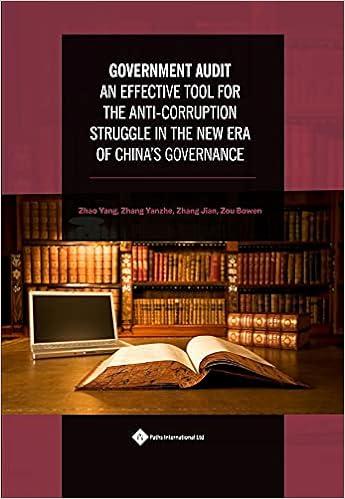Question
22. When deciding between two alternatives, the preferred alternative always has A. no opportunity costs. B. greater revenues than the other alternatives. C. less expense
22. When deciding between two alternatives, the preferred alternative always has
A. no opportunity costs. B. greater revenues than the other alternatives. C. less expense than the other alternatives. D. greater incremental profit than the other alternatives
23. A company is trying to decide whether to keep or drop the sporting goods department in its department store. If the segment is dropped, the manager will be fired. The manager's salary, in relation to the decision to keep or drop the sporting goods department, is
A. avoidable and therefore relevant B. not avoidable and therefore relevant C. sunk and therefore not relevant D. the same for all alternatives and therefore not relevant
24. Common costs
A. are fixed costs that are not directly traceable to an individual product line. B. normally not avoidable. C. Both A and B are true. D. Neither A nor B is true.
25. The formal documents that quantify a companys plans for achieving its goals are called
A. variance reports. B. budgets. C. exception logs. D. cost of production reports.
26. Managerial accounting stresses accounting concepts and procedures that are relevant to preparing reports for
A. taxing authorities. B. internal users of accounting information. C. external users of accounting information. D. the Securities and Exchange Commission (SEC).
27. The goal of managerial accounting is to provide information that managers need for
A. planning. B. control. C. decision making. D. All of the above answers are correct.
28. The last step in the planning and control process is to
A. implement the plan. B. construct the plan. C. make decisions based on the evaluation of the results. D. compare actual results to the planned results.
29. Which of the following is not a difference between financial accounting and managerial accounting?
A. Financial accounting is primarily concerned with reporting the past, while managerial accounting is more concerned with the future. B. Managerial accounting uses more nonmonetary information than is used in financial accounting. C. Managerial accounting is primarily concerned with providing information for external users while financial accounting is concerned with internal users. D. Financial accounting must follow GAAP while managerial accounting is not required to follow GAAP.
30. Which of the following costs does not change when the level of business activity changes?
A. total fixed costs B. total variable costs C. total direct materials costs D. fixed costs per unit
31. Opportunity costs are
A. considered to be fixed costs in the short term. B. another term for sunk costs. C. able to be controlled by most effective managers. D. the value of benefits foregone when one decision is selected over another.
32. When work is completed on a job, costs for the completed job are found in which of the following accounts?
A. Raw Materials Inventory B. Work in Process Inventory C. Finished Goods Inventory D. Cost of Goods Sold
Step by Step Solution
There are 3 Steps involved in it
Step: 1

Get Instant Access to Expert-Tailored Solutions
See step-by-step solutions with expert insights and AI powered tools for academic success
Step: 2

Step: 3

Ace Your Homework with AI
Get the answers you need in no time with our AI-driven, step-by-step assistance
Get Started


